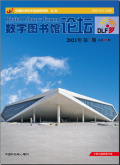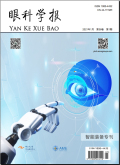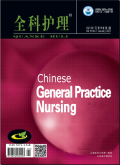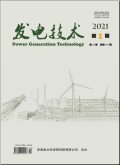国家预印本平台
中国首发,全球知晓
As urbanization intensifies, the synergistic stress of heat islands and air pollution poses significant challenges to urban sustainability, necessitating monitoring paradigms with higher spatiotemporal granularity. Conventional fixed-station networks, however, are constrained by their sparse distribution and inability to penetrate complex urban morphologies, leaving critical environmental ‘blind spots’. This study establishes a dynamic urban sensing framework by leveraging the pervasive mobility of food delivery riders-an emerging paradigm of opportunistic sensing. Specifically, a multi-modal data chain integrating portable sensors, GPS, and first-person visual systems is constructed to characterize compound environmental exposures within street canyons. Field data reveals that these microenvironments exhibit ambient temperatures ranging from 31 to 39 °C, with perceived temperatures frequently exceeding 40 °C, while PM2.5 concentrations display a distinct bimodal pattern peaking at 80 μg/m³. The Average Daily Dose (ADD) of PM2.5 during evening peaks is quantified at 0.32 times the Reference Dose (RfD), a health burden amplified 1.5-fold by the metabolic demands of high-intensity cycling. Furthermore, visual data facilitates the identification of ephemeral pollution sources, such as roadside barbecues, that typically evade stationary detection. Moving beyond diagnosis to intervention, an exposure risk map is constructed to inform adaptive governance strategies, including mandatory cooling intervals and shaded route prioritization. This study offers a scalable, cost-effective optimization of urban sensing systems and provides empirical support for human-centric decision-making in sustainable urban development.
针对高比例电力电子电力系统呈现“稳而不强”特性,以及传统渐近稳定性理论在刻画瞬态安全边界方面的局限,本文构建了新型电力系统动强度的概念架构与理论体系。研究基于非线性控制理论中的输入输出状态稳定性,在结构空间内确立了动强度的严格数学描述,揭示了在带宽竞争机制下,系统渐近稳定性(收敛速度)与动强度(抗扰裕度)之间存在的解耦乃至制约关系。在此理论基础上,本文构建了涵盖小扰动频域结构化鲁棒性能与大扰动时域多尺度安全裕度的多维量化体系;并引入“特征子系统”作为保持互联结构的降维映射工具,推导了可工程化应用的广义短路比指标,实现了从高维理论分析到低维工程判据的有效转化。此外,还基于动强度净增益提出了构网型装备的本质内涵与辨识准则,旨在为新型电力系统的规划补强与构网型控制技术应用提供坚实的理论支撑。
Long-lived non-equilibrium systems exhibit sustained activity and continuous dissipation without relaxing to equilibrium or collapsing into structural failure. While non-equilibrium dynamics are well studied, the conditions under which such dynamics can persist over extended time horizons remain insufficiently clarified. This work develops a minimal, process-level framework for understanding persistence in non-equilibrium systems. Rather than introducing new dynamical variables, equations, or predictive models, the analysis identifies a set of necessary constraints that any system must satisfy in order to remain a viable non-equilibrium steady state. These constraints are derived by exhaustively characterizing the generic failure space, which is shown to consist of two terminal modes: global equilibration and local freezing. Persistence is therefore framed not as an optimization problem, but as the avoidance of structurally unavoidable failure. Building on this foundation, the work further examines how non-equilibrium systems can be meaningfully compared with respect to long-term viability. It demonstrates that pointwise and ratio-based metrics are structurally ill-posed in far-from-equilibrium regimes due to irreversibility, historical accumulation, and projection effects. To address this limitation, a notion of structural equivalence is introduced, defined by shared capacity relations and failure modes rather than by metric similarity or mechanistic correspondence. Taken together, the two parts establish a strict logical ordering: persistence is a prerequisite for comparison, and structural equivalence is meaningful only within an admissible viability interval. The framework does not offer sufficient conditions, control strategies, or optimization targets. Instead, it delineates the boundary within which long-lived non-equilibrium operation is physically admissible and structurally comparable, independent of system domain, scale, or specific implementation.
背景 代谢综合征(MetS)严重影响个体的身体健康,尤其是对脏器的损害。连续代谢综合征评分(cMetS)是基于腰围(WC)、三酰甘油(TG)、高密度脂蛋白胆固醇(HDL-C)、平均动脉压(MAP)及空腹血糖(FPG)5项代谢指标进行加权计算而成的评分标准,但目前对于cMetS与肾脏功能的相关性研究相对较少。目的 探讨cMetS早期筛查慢性肾脏病(CKD)的有效性,并通过控制相关因素降低目标人群患CKD的风险。方法 2017—2021年,本项目在安徽省12个县市的社区体检居民中,针对心血管疾病高危的60岁以上老年人,进行早期筛查,共筛选收集了2 049份数据。将研究对象依据估算肾小球滤过率(eGFR)水平进行分组:eGFR<90 mL·min-1·(1.73 m2)-1为低滤过率组,eGFR≥90 mL·min-1·(1.73 m2)-1为正常组。采用多因素Logistic回归分析探讨cMetS四分位水平与eGFR降低风险的关系。结果 低滤过率组(n=927)的年龄、体质量、BMI、WC、收缩压(SBP)、FPG、血肌酐(Scr)、尿素氮(BUN)、TG、腰高比(WHtR)、腰高比0.5(WHT.5R)、身体圆度指数(BRI)及cMetS均高于正常组(n=1 122),差异有统计学意义(P<0.05)。依据cMetS四分位间距分为Q1~Q4组,Q1组-4.40~<-0.18分,Q2组-0.18~<0.30分,Q3组0.30~<0.79分,Q4组0.79~4.96分。4组的BH、体质量、BMI、WC、SBP、DBP、MAP、FPG、Scr、TC、TG、低密度脂蛋白胆固醇(LDL-C)、WHtR、WHt.5R、BRI随cMeTS水平升高而升高,BUN、HDL-C、eGFR随cMeTS水平升高而降低(P<0.05)。与cMetS Q1组相比,Q2、Q3、Q4组肾小球滤过率降低的风险升高(OR=1.462、1.656、1.652,P<0.05),与BMI M1组(16.51~23.19 kg/m2)比较,M2(23.19~25.31 kg/m2)、M3(25.31~27.61 kg/m2)、M4组(27.31~40.89 kg/m2)肾小球滤过率降低的风险升高(OR=1.373、1.328、1.385,P<0.05)。结论 在60岁及以上人群中,随着cMeTs水平升高,年龄增大、BMI增大、eGFR下降,cMetS升高和BMI升高是肾小球滤过率下降的独立危险因素。随着年龄的增长,肾脏的功能逐渐减退,而MetS的存在会进一步加速这种衰退。对于这一目标人群,需要进行早期的干预,以延缓肾功能的恶化。
背景 神经丝轻链蛋白(NfL)作为神经损伤及神经炎症的敏感标志物而备受关注,已有研究证明其与高血压及心血管不良事件相关,但目前其与夜间高血压患者左心室肥厚(LVH)的潜在关系尚未明确。目的 探讨NfL与夜间高血压患者LVH发生风险的相关性。方法 选取2022年12月—2024年12月于武汉大学人民医院行24 h动态血压监测(ABPM)且病例资料完整的351例夜间高血压患者为研究对象。将患者按NfL四分位数分为4组:Q1组(NfL≤62.82,88例)、Q2组(62.82<NfL≤92.00,88例)、Q3组(92.00136.40,88例)。收集患者基线资料、24 h ABPM结果、实验室检查结果及心脏彩超结果。根据美国超声心动图学会推荐公式计算左心室质量(LVM)及左心室质量指数(LVMI)。采用Spearman秩相关分析探讨NfL与心脏彩超参数的相关性。应用广义线性回归模型分析不同NfL分组与LVMI的关联。使用Logistic回归分析探讨NfL与夜间高血压患者LVH发生风险之间的关系。绘制受试者工作特征(ROC)曲线评估NfL及自主神经功能相关指标对夜间高血压患者发生LVH风险的预测价值,并进行亚组分析。结果 4组年龄、室间隔舒张期厚度(IVSd)、左心室后壁厚度(LVPWd)、LVM、LVMI比较,差异有统计学意义(P<0.05)。Spearman秩相关性分析结果显示,NfL水平与夜间高血压患者的左心室舒张末期内径(LVIDd)(rs=0.135,P=0.011)、IVSd(rs=0.128,P=0.016)、LVPWd(rs=0.146,P=0.006)、LVM(rs=0.162,P=0.002)及LVMI(rs=0.277,P<0.001)呈正相关。广义线性模型分析结果显示,调整混杂因素后,与Q1水平的NfL相比,Q3(β=0.110,95%CI=0.003~0.217,P=0.044)和Q4(β=0.288,95%CI=0.180~0.395,P<0.001)水平的NfL均是LVMI的影响因素。Logistic回归分析结果显示,调整混杂因素后,NfL水平升高是夜间高血压患者发生LVH的危险因素(OR=1.012,95%CI=1.007~1.016,P<0.001);与Q1水平的NfL相比,Q3(OR=3.328,95%CI=1.152~9.611,P=0.026)和Q4(OR=9.059,95%CI=3.278~25.036,P<0.001)水平的NfL均是夜间高血压患者发生LVH的危险因素。ROC曲线分析结果显示,NfL、去甲肾上腺素(NE)、乙酰胆碱(ACh)、NE/ACh预测夜间高血压患者发生LVH风险的ROC曲线下面积(AUC)分别为0.744、0.618、0.577、0.603,灵敏度分别为75.0%、50.0%、48.5%、48.5%,特异度分别为63.3%、69.3%、51.5%、75.3%。亚组分析结果显示,NfL水平与夜间高血压患者LVH发生风险在年龄、男性、BMI、估算肾小球滤过率(eGFR)亚组中呈正相关(P<0.05)。结论 在夜间高血压患者中,NfL水平与LVH发生风险独立相关,且对识别该类患者中的LVH高危患者具有一定的临床预测价值。




















